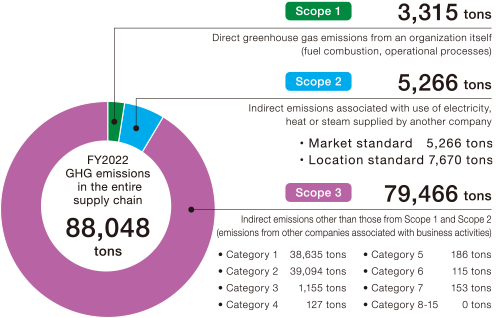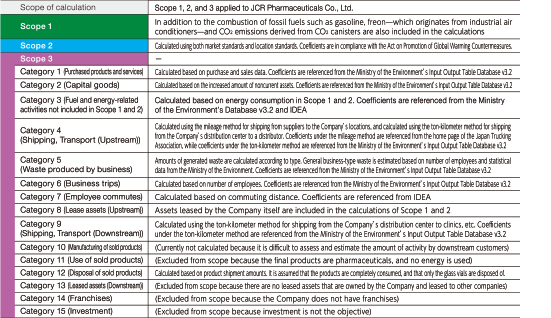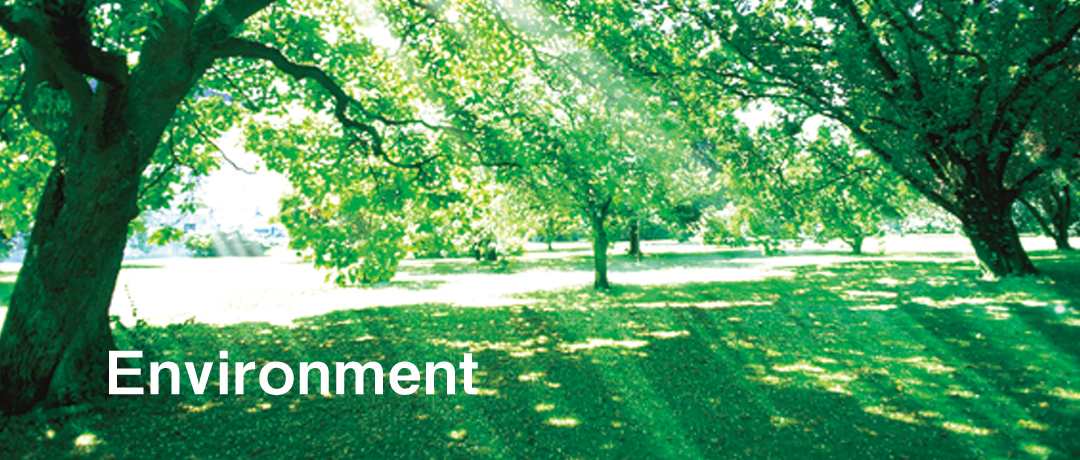JCR has been taking a wide range of steps to mitigate its environmental impact, including reducing CO2 emissions and effectively using water resources. For example, we have worked to transition to LED lighting at all company facilities and shift all our company cars to hybrid cars, electric vehicles, and hydrogen-powered cars. In addition, we have promoted measures such as reducing water use at production sites, along with adopting single-use bioreactors to ensure efficient use of manufacturing facilities.
In July 2022, JCR established a new Environmental Committee to further strengthen its environmental initiatives, including efforts toward carbon neutrality. The Committee is responsible for setting basic policies involving the environment and for identifying material issues, and will establish and manage progress with targets based on those issues
The Kobe Science Park Center, JCR’s new production site completed in November 2022, makes proactive use of solar power generation and other types of renewable energy. In addition, we are working to contribute to reducing global environmental impact by recycling industrial waste (waste plastics) generated by our production sites through material recycling, thermal recycling, and conversion into recycled solid fuel.
Top>Sustainability>Environment
JCR has been implementing a wide range of measures to mitigate its environmental impact, such as reducing CO2 emissions and effectively using water resources.
Initiatives for Environmental Conservation
1. Recycling industrial waste (waste plastics)
Since FY2022, we have been working to select global environmentally friendly waste collection, transport, and intermediate treatment operators, and to strengthen our understanding and sorting of different types of industrial waste. This is intended to optimize disposal methods and monitor the volume of waste plastics disposed, as issues in recycling and reuse of industrial waste (waste plastics) and improving recycling rates. As part of future efforts, in FY2023 we will actively promote material recycling of waste plastics discharged by our production sites. We are working to help mitigate the global environmental burden by reducing CO2 emissions, conserving depletable resources, and extending the life of landfills through thermal recycling of waste plastics for which material recycling is difficult, and by converting them into recycled solid fuels—alternatives to fossil fuels—including RPF*1 (solid fuel made from waste plastics and paper waste) and fluff*2 (shredded soft plastic).
*1Refuse Paper & Plastic Fuel (RPF): A high-grade solid fuel made primarily from waste plastics, with a calorific value comparable to coal. It not only offers excellent handling and storage properties, but also advantages in terms of economy and CO2 reduction.
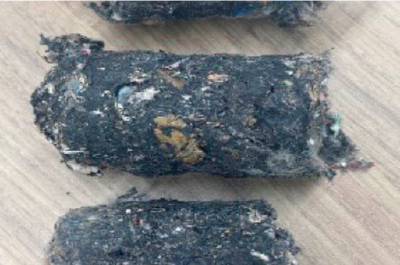 RPF
RPF
*2Fluff fuel: Fluff fuel is produced by sorting and shredding waste plastics. Compared to RPF fuel, derived from general waste plastic, fluff fuel is characterized by a low environmental impact since it requires no process for adding heat.
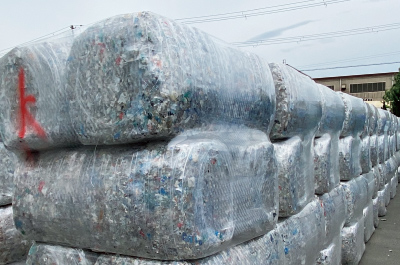 Fluff fuel
Fluff fuel
2. Consideration for biodiversity and proper management of chemicals and hazardous substances in wastewater management
In order to minimize our impact on biodiversity, we appropriately manage methods for handling and disposing of chemical substances used in R&D and manufacturing based on risk assessments. In addition, sewage containing chemical substances and hazardous materials generated at each production site is properly treated via the wastewater treatment system described below. We then monitor the effluent to ensure it is discharged into the public sewer system at levels at or below the standards required by law.
• Wastewater treatment tank using yeast (new production site)
Because drug substance manufacturing often generates highly concentrated BOD, we have installed a system that uses yeast to decompose the BOD and includes compliance with wastewater regulations. Chemical dosing via a continuous neutralization device capable of neutralizing manufacturing wastewater is also used to adjust pH values to within values permitted by wastewater regulations; the wastewater is then discharged into the public sewer system.
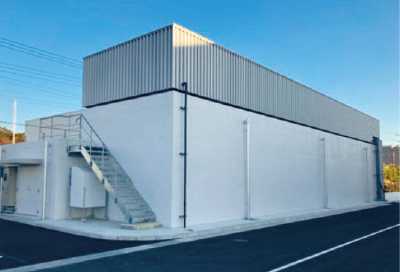 Wastewater treatment tank
Wastewater treatment tank
• Virus inactivation equipment (new production site)
We have installed a system to inactivate microorganisms, viruses, etc. contained in wastewater from the process of manufacturing biopharmaceuticals and other products. This process ensures that sewage is disinfected and discharged into the public sewer system with consideration for the environment.
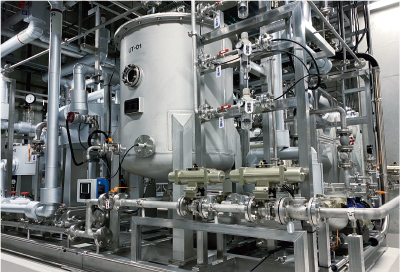 Virus inactivation treatment system
Virus inactivation treatment system
3. Consideration for the surrounding residential environment at the new production site
At the Kobe Science Park Center, manufacturing facilities and equipment that generate noise and wastewater odors, etc., are located on the factory side of the property, while the office building is located on the residential side in consideration of the need to preserve the residential environment for the people who live near the factory.
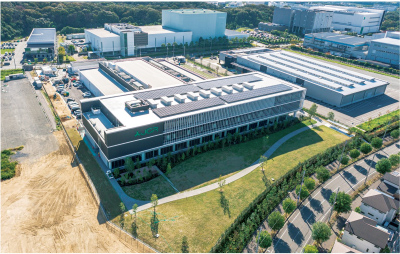 Kobe Science Park Center
Kobe Science Park Center
4. Other initiatives
- We use rental uniforms made of recycled materials, and used uniforms are collected and recycled as raw material, contributing to a reduction in the use of petroleum-derived raw materials.
- We are reducing the use of copy paper by going paperless (digitizing documents and records related to GMP). We also use paper products with a FSC certification mark (switch completed in some departments, with plans for Company-wide rollout going forward).
- We use 100% recycled toilet paper (with flushable cores and wrappers). (Switch completed in some departments, with plans for Company-wide rollout going forward.)
- We are switching electric cars used as company vehicles to long-range models.
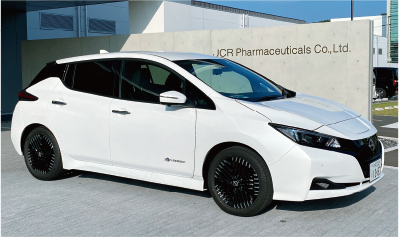 Electric vehicle
Electric vehicle
Energy Use
Total energy use has increased since heat source equipment went into full-scale operation at our research facilities around May 2022, and the new production site began operation in the latter half of FY2022.
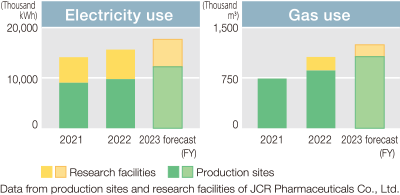
At the Kobe Science Park Center, we have installed 588 solar panels on the roof of the office building, and use renewable energy in staff spaces, the cafeteria, and elsewhere. In accordance with recommendations from the Task Force on Climate-Related Financial Disclosures (TCFD), we have been disclosing information on total energy use since FY2021.
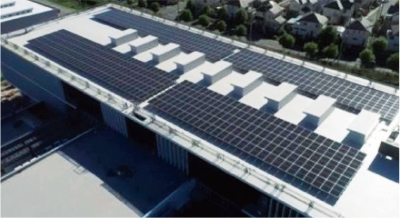 Solar power generation panels that have been installed over the entire roof of the Kobe Science Park Center office building
Solar power generation panels that have been installed over the entire roof of the Kobe Science Park Center office building
Water Resources
In FY2021, we saw a partial reduction in the use of water resources thanks in part to reductions in the amount of water used in research and production processes and efforts such as promoting the recovery and reuse of exhaust steam. However, water use increased temporarily due to growth in manufacturing business results (manufacturing of stock solution for COVID-19 vaccine). In FY2022, water use increased significantly due to full-scale operation of heat source equipment at the research facilities and other factors. Among production sites, operation of a new plant brought an increase in water use, but it decreased overall with the end of contract manufacturing stock solution for COVID-19 vaccine.
All water used in research and production activities is treated appropriately on site before being discharged.
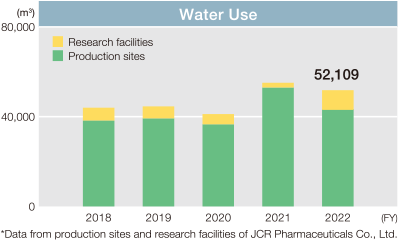
Information Disclosure in Accordance with the TCFD
JCR will deliberate on matters such as establishing medium- to long-term GHG reduction targets in light of its business plans and initiatives such as the GHG reduction targets set by various companies, with the aim of keeping the rise in temperatures that has occurred since the industrial revolution below 1.5°C.
JCR will continue to handle the analysis of risks and information disclosure related to climate change in accordance with TCFD recommendations. Scope 3 emissions represented about 90% of GHG emissions overall in FY2022. For Category 1, which represents half of that amount, we plan to work with suppliers to prioritize reviewing and implementing measures to reduce those emissions.
[Governance]
JCR is working to strengthen governance initiatives related to climate change. Policies regarding activities and specific contents are deliberated by the Sustainability Committee, and the Board of Directors make decisions on them, taking into consideration the opinions of the Sustainability Advisory Committee.
[Strategy]
Regarding physical and transition risks and opportunities related to climate change, JCR plans to identify those that affect operations to a high degree as important risks and opportunities after assessing the significance of their short-, medium-, and long-term impact on business, strategy, and finances.
[Risk Management]
JCR is considering risk identification, assessment, management, and enterprise risk management integration processes, and will disclose information on this moving forward.
[Metrics and Targets]
JCR will consider climate change performance indices going forward. In addition, our Scope 1, 2, and 3 (some categories) GHG emissions calculated according to the GHG Protocol, an international calculation standard, are as follows.
FY2022 GHG Emissions by Scope
